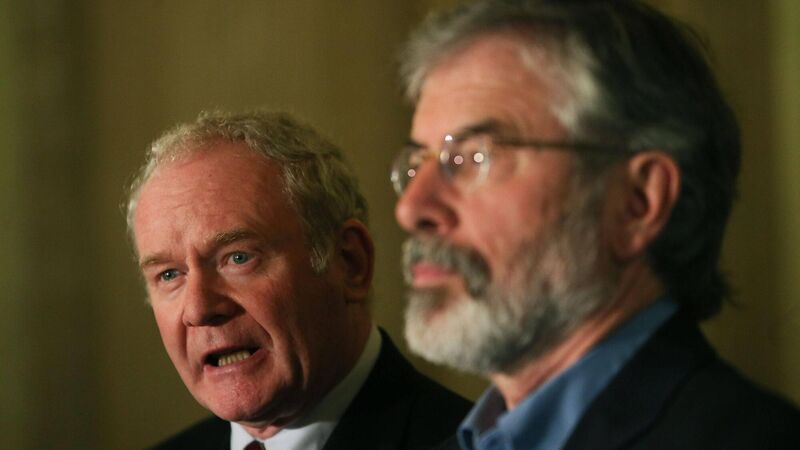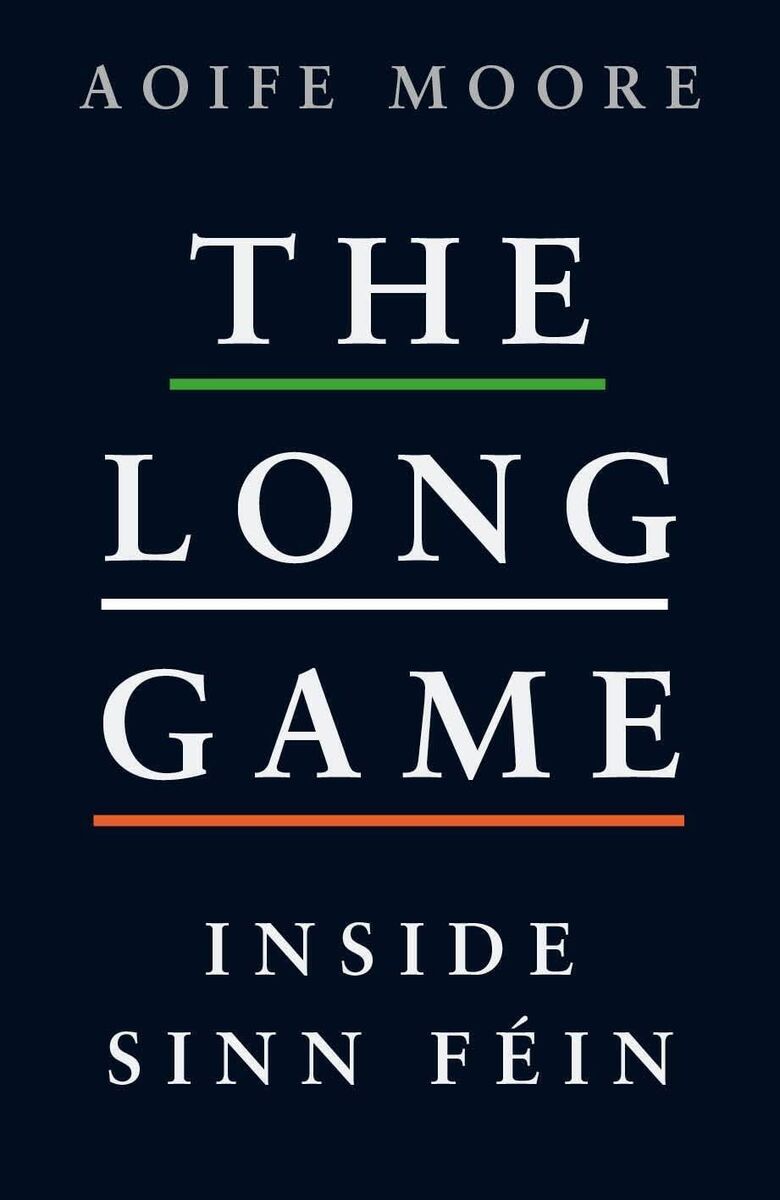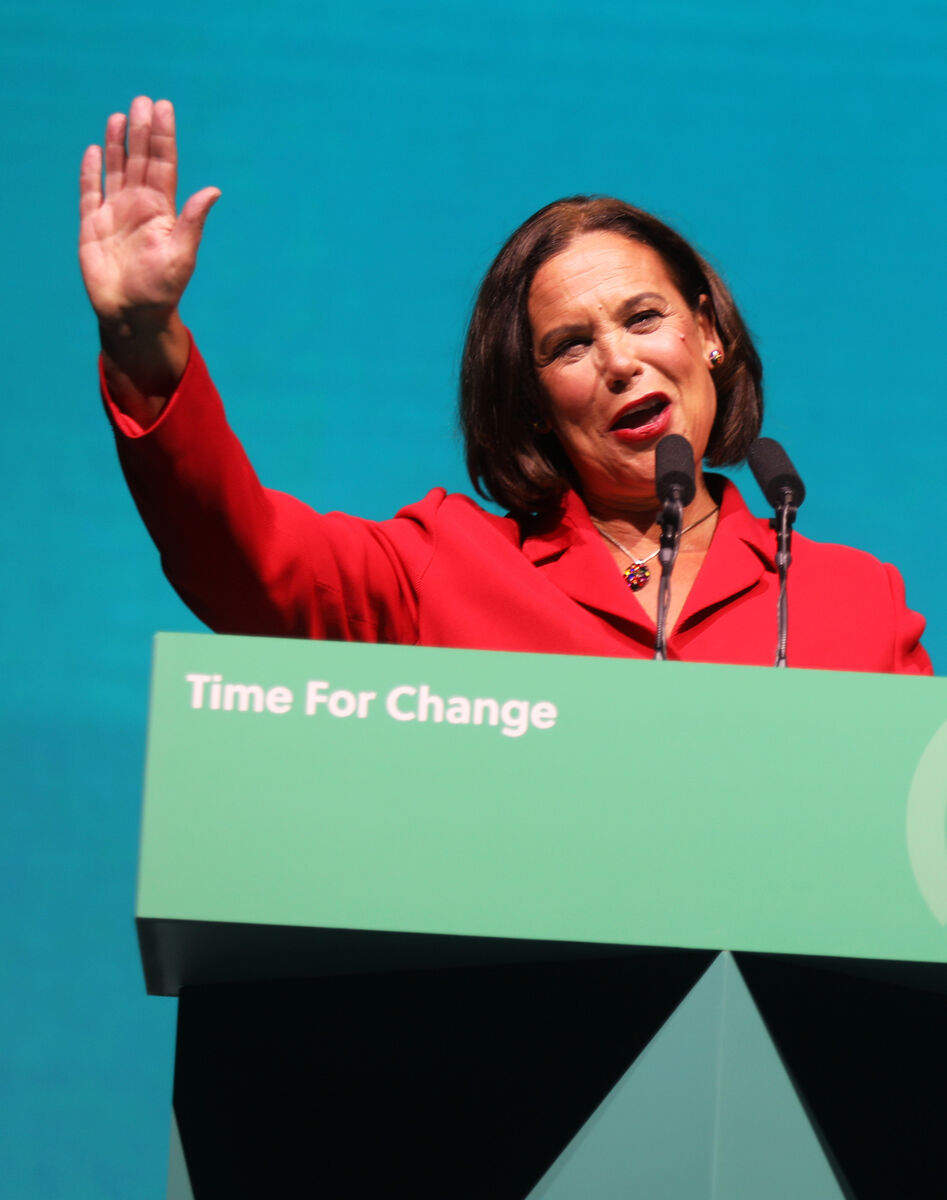Book Review: Aoife Moore's look into Sinn Féin is courageous but incomplete

One genuine revelation in the book is that Martin McGuinness wanted Adams to temporarily step aside as Sinn Féin leader in 2013 when his brother was convicted of the rape of his daughter over a six-year period. Picture: Brian Lawless/PA
- The Long Game: Inside Sinn Féin
- Aoife Moore
- Sandycove, €17.99
Aoife Moore’s book of life inside Sinn Féin comes to the shelves promising revelatory details about a party undergoing a profound transformation. Her publishers assure potential readers that it is a ground-breaking story of Ireland’s biggest and most elusive party.
There are certainly some interesting revelations, but for those wanting to know how it is that Sinn Féin stands on the precipice of power in both parts of Ireland this book will come as a disappointment.
It is instead a series of vignettes covering various episodes on the trajectory of Sinn Féin as it gathers increasing numbers of voters over the decades. Some of these stories are thought-provoking and will make uncomfortable reading for many in the party and its supporters.
But as to Sinn Féin now has all these people prepared to vote for it all across the island of Ireland Moore offers not a jot.
She is certainly not short of courage and her book is infused with a certain passion as she outlines various IRA atrocities. She is particularly coruscating about Gerry Adams — she offers a series of brutal assessments of his behaviour over his many years as leader of Sinn Féin. These range from the hunger strikes of 1981 to the Queen’s visit to the Republic of Ireland 30 years later.
Moore paints him as a de Valera of the north; he only had to look into his own heart to know what republicans felt and wanted. On Sinn Féin’s decision to boycott the Queen’s visit in 2011, the book recounts a meeting of one of the party’s many leadership committees where Adams announces that the general view was that it should not attend any of the ceremonies.
There was no idea of when, or with whose input, this supposedly general view had been formed, the author comments acidly. Like much else with Sinn Féin, Adams’s view was the general view. She recounts in uncomfortable detail the fallout over the heinous abuse of Adams’s niece Áine by her own father Liam and is rightly critical of how both Gerry Adams and Sinn Féin handled it.
This leads to the one genuine revelation in the book — that Martin McGuinness wanted Adams to temporarily step aside as Sinn Féin leader in 2013 when his brother was convicted of the rape of his daughter over a six-year period.
Moore describes McGuinness’s offer to Adams to stand down as an aborted heave. Adams has stated Moore’s revelation was a typically compassionate offer by McGuinness at a time of huge difficulty and upset for his family, but that he was able to continue working.
In fact, one of the more interesting things in the book is how Adams appeared to be increasingly put out by McGuinness’s growing public profile as Sinn Féin entered government in the North.

For those interested in the byzantine structures of Sinn Féin, then, there is much of interest in this book and Moore is very good on the yawning chasm between the centralised, almost cult-like behaviour of its head office and the laughable shenanigans of some of its local branches, particularly in the Republic.
She lays bare the hypocrisy of its TDs and salaried members supposedly taking the average industrial wage and outlines the mockery of how its MLAs and staff would receive payslips from the Northern Ireland Assembly detailing salaries that they would never actually see; a practice that went on for years.
While one may quibble with Moore’s assessment of various episodes in the murky past of Sinn Féin, including to what extent shadowy figures in the North run its operations, its attitude to IRA atrocities and to the disappeared, its tortured route to an all-island position on abortion, and its failure to understand the politics of the Republic, a far more existential problem is that she gets factual information wrong.
It may be understandable to confuse the fact that Paddy Agnew, elected in Louth in the June 1981 general election was never a hunger striker, as Moore claims he was. It is, however, absolutely unforgivable for a book purporting to offer a serious analysis of the politics of Ireland over the last half century to state that after that election Fianna Fáil was forced to form a coalition government for the first time. This is such a basic error that it creates doubt about pretty much everything else Moore states in her text.

A more substantive problem is that Moore shows pretty much no interest in electoral politics. Sinn Féin wants to be in power and to do so it must win elections. Yet we get no insight into any of Sinn Féin’s campaigns as its vote increased in the North over successive elections.
There is, for instance, no assessment of why Gerry Adams lost his seat in West Belfast in 1992 beyond a cursory statement that it was because of a swing to the SDLP. No thought is given as to whether this brought about any change in thinking among Adams or his acolytes. Equally, there is no assessment of how he won the seat back in 1997.
Things are even worse when it comes to the Republic. There isn’t a word about Martin McGuinness’s presidential election campaign of 2011 nor of the fact that McGuinness, despite his discomfort at being rigorously questioned about his IRA past, polled a respectable 13.7% of the first preference vote.
The 2018 presidential election merits one line, with nary a word about the candidate Liadh Ní Riada or of why the party’s new leader, Mary Lou McDonald felt it was wise to run a candidate at all against a widely popular president.

Despite claiming that Shane Ross’s biography of McDonald was not especially explosive, Moore offers very little as to what makes McDonald — why she is as she is, or even how she became leader of Sinn Féin beyond that she was chosen by Adams. The most we get about McDonald’s views on the north is that she had some.
Things are no better when it comes to assessing Sinn Féin’s woeful performance in the local and European elections of 2019, or its remarkable performance in the February 2020 general election. The analysis of that historic performance is reduced to the party spokesperson on housing Eoin Ó Broin phoning head office after canvassing in his Dublin Mid-West Constituency to say ‘something is going on.’
This book begins and ends with a note on sources. At the beginning Moore tells us how Mary Lou McDonald wished her well with the project but then turned cold, refusing all interview requests, as did pretty much every other Sinn Féin person she approached. In that context it is to her credit that she continued.
The problem is that all her sources are anonymous and after a few pages the use of ‘someone told me’, which is almost on every page, begins to grate. This is compounded by the source notes at the end which are basic in the extreme.
The secondary source literature Moore has consulted is also strikingly small. To give just one example she takes no account of the really groundbreaking work of Niall Ó Dochartaigh in his book , published in early 2021, about back-channel negotiations in Northern Ireland and why efforts to end the conflict in Northern Ireland through such negotiations repeatedly failed despite having a section on those negotiations.
Alas, like much else in this book, it is treated cursorily.







